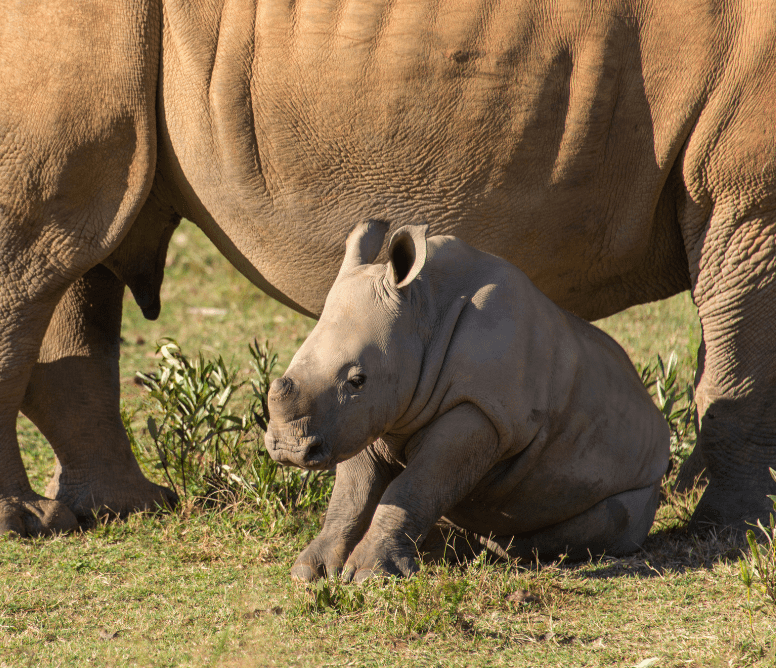Explore the World of Rhino
Learn about their habitat, behavior, and unique traits.
About the Animal
Rhinos are among the world’s most endangered large mammals, with all five species facing varying levels of threat. Black, Javan, and Sumatran rhinos are Critically Endangered, while the white rhino is Near Threatened. The main cause of decline is poaching, driven by the high demand for rhino horn in traditional medicine and as a status symbol. Despite international bans, illegal trafficking continues. Conservation efforts include dehorning rhinos to deter poachers, habitat protection, anti-poaching units, and the use of technology like drones and tracking collars.
Habitat
Rhinos inhabit a range of environments, from the savannas and grasslands of Africa to the dense forests of Southeast Asia. White and black rhinos are primarily found in protected parks and reserves in southern and eastern Africa, while the critically endangered Javan and Sumatran rhinos are limited to small populations in Indonesia. Habitat loss due to agriculture, human settlements, and deforestation has made survival increasingly difficult, leading to isolated and vulnerable populations.
Diet
Rhinos are herbivores with diets that vary by species and environment. White rhinos are grazers and feed mainly on grass, which they consume with their wide, square mouths. Black rhinos are browsers and eat leaves, twigs, and shrubs. Sumatran and Javan rhinos also browse on a variety of forest plants. They require vast amounts of vegetation daily, making access to healthy, uninterrupted habitat critical for their survival.
Gallery

